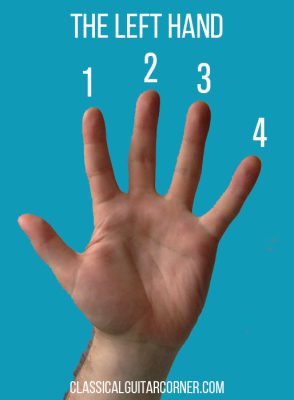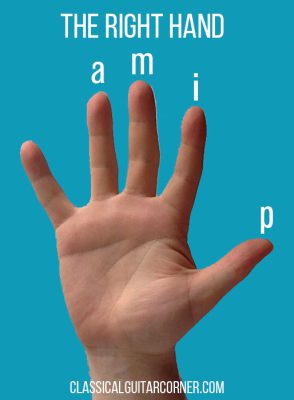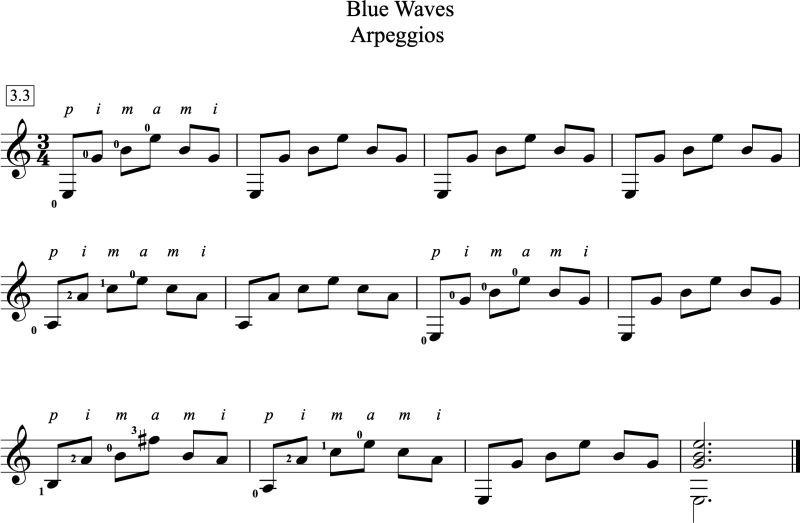Learn your guitar finger numbers and names
Do you know your guitar finger numbers and names? On classical guitar we use letter names for our right-hand fingers, and numbers for our left-hand fingers.
 Left-Hand Guitar Finger Numbers
Left-Hand Guitar Finger Numbers
- 1 – index
- 2 – middle
- 3 – ring
- 4 – little
The thumb does not have a number as we do not often use it to fret notes, except in rare instances. (However, virtuoso competition winner Marko Topchii has incorporated the left thumb into his technique.) Additionally, you will see “0” in some guitar scores to indicate the open string.
Right-Hand Guitar Finger Names
- p – thumb
- i – index
- m – middle
- a – ring
- c – little
 The right-hand guitar finger names all come from the Spanish words for each of our digits.
The right-hand guitar finger names all come from the Spanish words for each of our digits.
- p – pulgar
- i – indice
- m – medio
- a – anular
- c – chicito
We very rarely use the “c” or little finger in classical guitar music. So “pima” refers to the fingers we use the most in the right hand.
The “c” finger will appear sometimes in scores that use the rasgueado flamenco strumming technique. But, again, these are not all that prevalent in the repertoire.
Examples from classical guitar music
Let’s look at some examples of how these finger names/numbers are used in classical guitar music.
Romanza

Lágrima

Typically left-hand finger numbers appear to the left of the notehead in small numbers. Right-hand finger names often appear above treble notes (while often notes to be played with the thumb, p, appear below bass notes).
Now some fingerings are optional — you don’t have to play exactly the fingerings written in the score. For instance, in Romanza above, we might play a double stroke with m on the first string. This has the double effect of emphasizing the melody note on the first string and resting the middle finger on the second string so it’s prepared to play the open B. In fact, while we can play the melody in Lágrima with the a finger, we can also employ a double stroke on m there for the same effect.
Now that you know your finger names and numbers, let’s play something!
Below is an arpeggio from one of the Practice Routines at Classical Guitar Corner Academy. It is a simple arpeggio with the right-hand fingering “pimami.” The first chord has you start out with open strings (that’s what the 0’s mean). If you find the other left-hand fingerings difficult, just keep playing the open strings.

We hope this deep dive into the right- and left-hand finger numbers and names was useful for you! Are you a beginner looking for more lessons? Check out our Beginner Classical Guitar Resources.

Leave A Comment